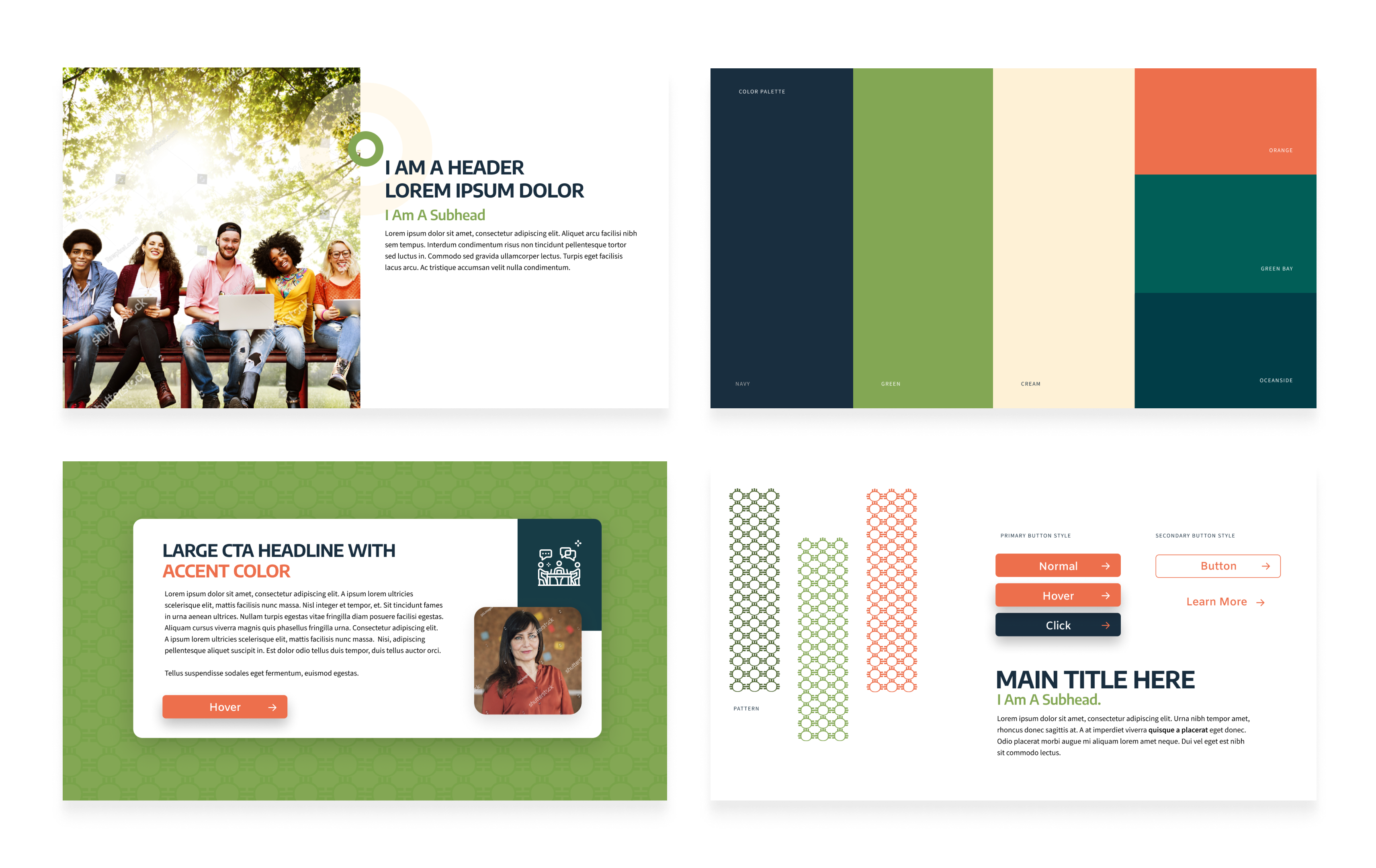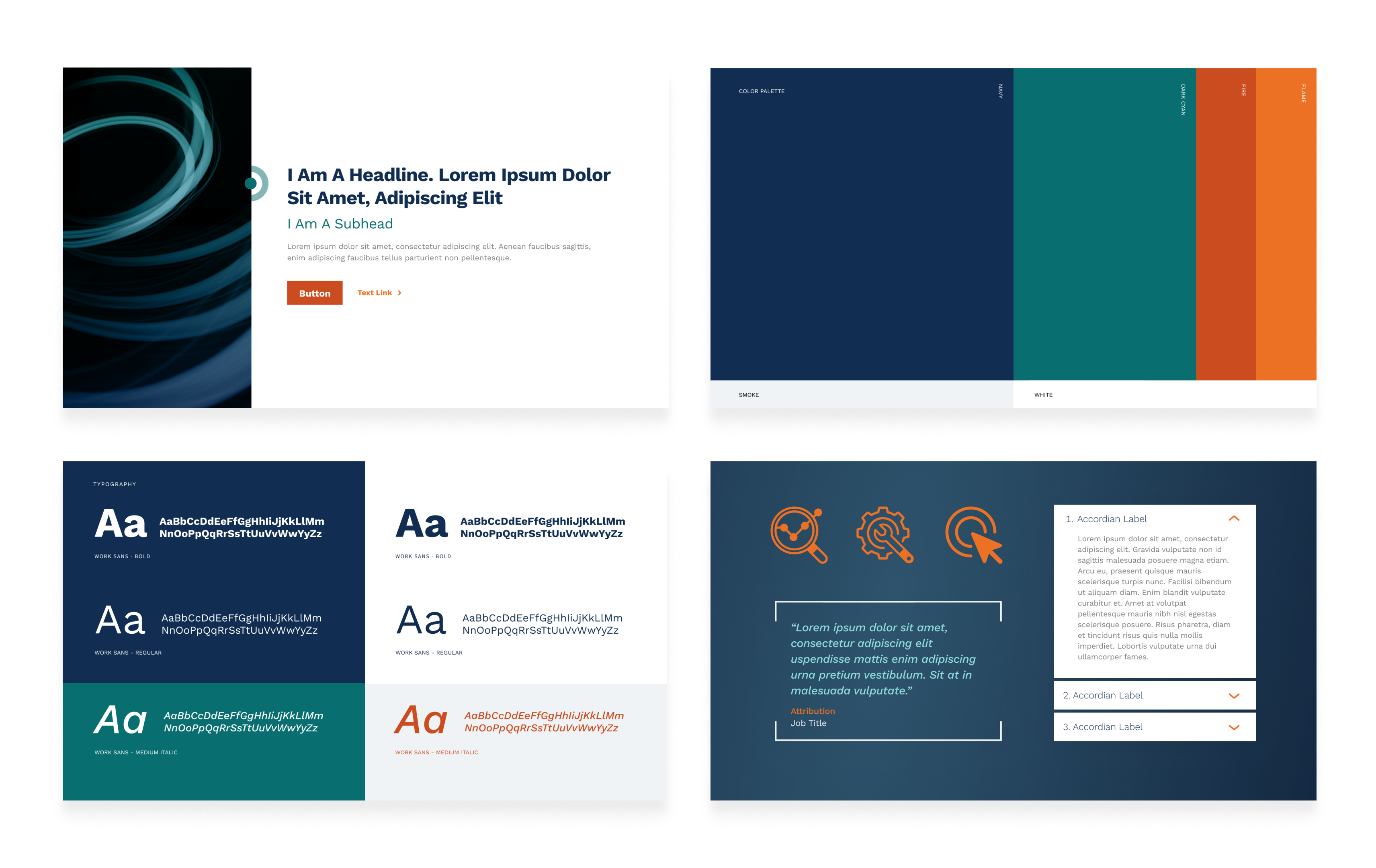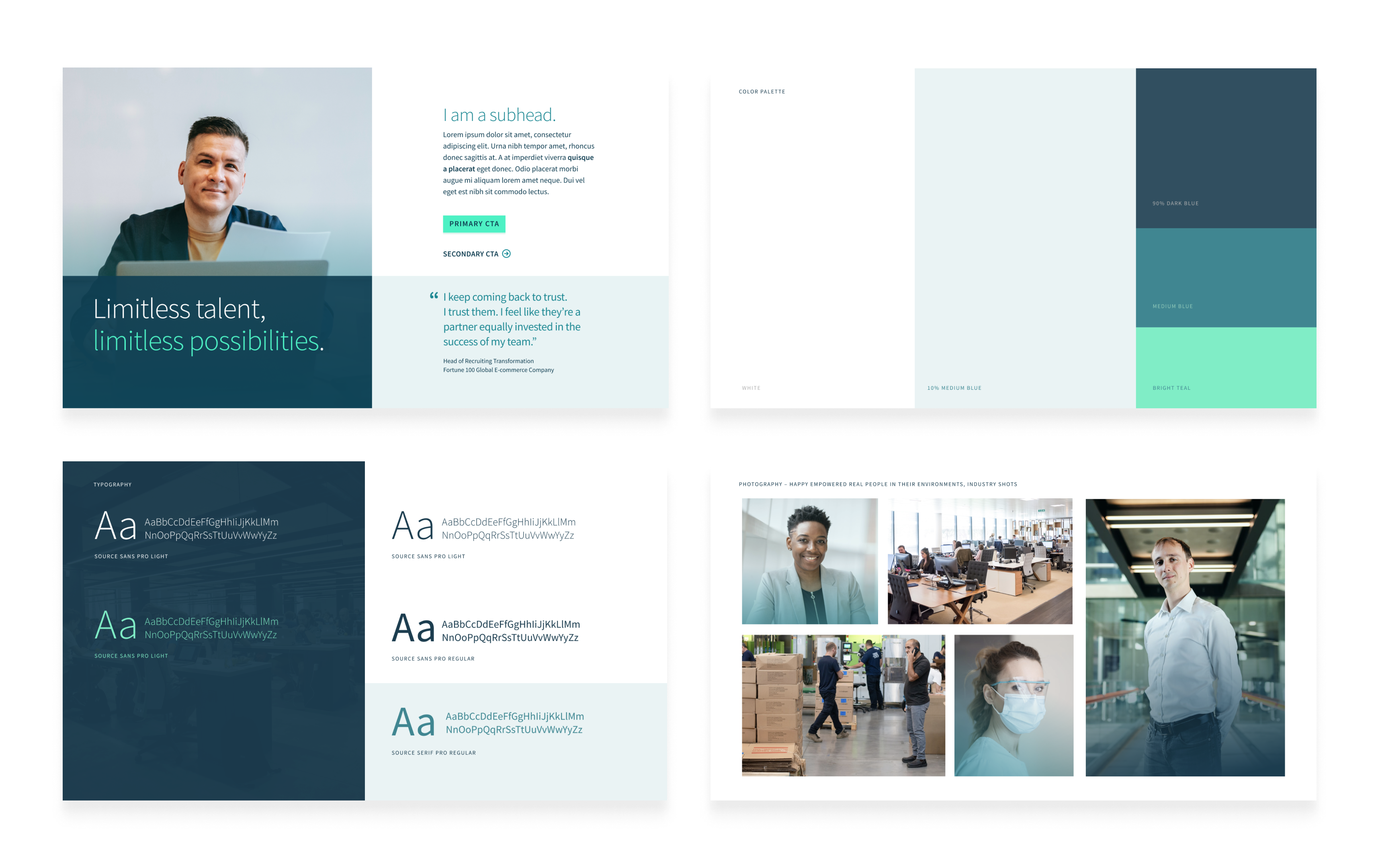
By Shawn Smajstrla, Content Specialist
Mood boards have a long tradition in interior decoration, photography, and wedding planning, but their utility has carried into the digital design space. This is particularly relevant for brands because websites have become the most valuable real estate they own. So, what exactly is a mood board and how can it be useful?
For successful design projects, a mood board is one of the initial steps. Often described as a collage, a stringent definition might call it an arrangement of images and materials intended to evoke a style or concept. Describe them how you will; designers find mood boards vital to delivering effective results.

"It's an exercise in the organization of visual thoughts. A collective of visual ideas," explains Ian Cruz, a designer at Ironpaper. "Starting with a brief from a client or some ideas that have been discussed, you start to collect things mentally and visually in order to see and make relationships that you might not be able to envision unless you actually see those different things together in front of your eyes."
Ironpaper Design Director Sara Backus likes to think of mood boards as a closet of visuals.
"You can go back to this reference point of: here are the socks and the scarves and the shirts and the coats that I have to put together an outfit," she says. "It gives you all the components to sort of draw reference from. It may start messy, but you can organize the outfit once you see it laid out together."
As with any project, a good design project should start with research, and a mood board is essentially visual research. It's part practical and part inspirational. However, organizations need to understand that a mood board is not to be confused with a brand standards document or a set of branding guidelines.

"I think it could be easy for a client to get confused," Sara says. "They might think, 'Well, you have all of our colors, you have all of our photo styles in the brand standards,' but mood boards allow us to push new ideas and develop visual hierarchy that may not be defined in the brand standards."
"Mood boarding is a stage where you're still trying to make decisions and put things together," Ian adds. "So, there will be a somewhat systematic approach to having different ideas collected in a way that creates a sense of a visual style. But it's not yet a style. It's not yet defined. It's just more or less an idea of something that can become defined."
Digital design projects can range from laying out a single piece of collateral to completely rebranding and relaunching a website. Simple efforts, such as the former, typically won't require a mood-boarding process. But anytime the project takes the brand in a new direction, a mood board is helpful and essential to saving budget in the long run.
"If it's new or refreshed branding, I would say 100% it needs that vetting process," Ian asserts. "Anything that requires being able to back up design decisions."
The mood boarding process helps avoid miscommunications that occur when people try to verbally communicate visual concepts, which means designers don't waste time creating designs that won't work.
"It needs to be understood by clients that this is not wasting time." he asserts. "It's a process that is going to create improved work in even swifter amounts of time. It's part of an empowering process, not just for the designers but also for the client, to have a sense of understanding where and why their style is working for what reasons."
Ironpaper designers Vanessa Medina and Kelsey Arras insist that mood boards serve as an important communication bridge between clients and designers.

"It opens the door to more clear communication at the beginning," Vanessa says. "It's a good exercise for clients to massage their own ideas. Sometimes they don't know exactly how to communicate what they like and don't like unless they have something in front of them. If we jump right into doing the actual work, it's going to mean more edits and more back and forth between the team and the client."
"It's something that really helps me do my job," Kelsey adds. "Understanding all the different pieces that need to go into the design, like the photo treatment, the text treatment, the colors. It brings all those things together into one place and can help a designer nail down the bigger picture before putting pen to paper and potentially wasting time on designs that might not work."
Mood boards can come in various shapes, sizes, approaches, and layouts. Ultimately, they serve the purpose of delivering a successful design project. Designers and clients benefit from mood boards because they:
by Jonathan Franchell, CEO of Ironpaper - For more tips and hacks: Need to remove a new line after h1 tags? Both web designers and SEO practitioners need to employ headline tags: H1, H2, H3 in several ways to improve web page structure and tag...

The marketing industry is transforming significantly due to generative AI and increasing market complexity. Gartner's prediction of a 25% decline in traditional search traffic suggests that the era of search engines is dying. AI tools, particularly...

The Crowded Arena of the IT Marketplace Updated December 2024 The Information Technology (IT) landscape is experiencing rapid growth and intensifying competition. IT spending is projected to reach nearly 5.1 trillion U.S. dollars in 2024, a...

Updated December, 2024 The field of digital marketing is evolving rapidly in response to new technology and changing buyer expectations. To help career-minded marketers, we’ve rounded up the top 10 skills needed to succeed in the field. These are...
